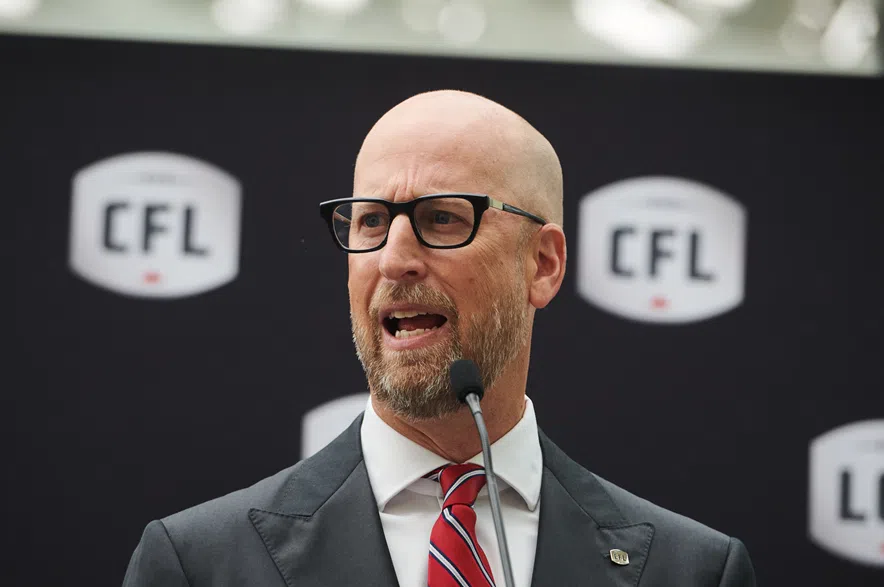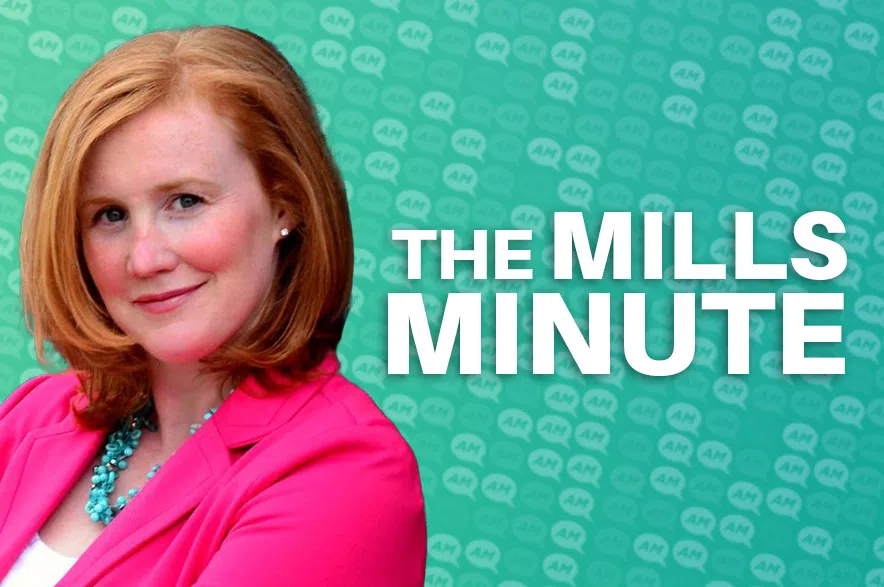The Canadian Football League is making some big changes to the size and layouts of the field, the location of the goalposts, the single-point rouge and the play clock over the next two seasons.
Commissioner Stewart Johnston made the announcement on Monday morning at a news conference, describing the changes as “a watershed moment” for the CFL.
Read more:
- Jamie Nye: Upon review, the CFL’s replay centre should be overturned
- Stewart Johnston believes CFL has plenty of positive momentum in 2025
- The Green Zone: New CFL commissioner Stewart Johnston shares his vision
“Our game must continue to evolve and modernize for our players, our fans and our partners,” Johnston said.
The first change announced on Monday will see the goalposts moved to the back of the end zones, starting in 2027.
Johnston said the change will improve player safety by reducing the potential for collisions with the posts, while also ensuring fans in the stands and watching on TV have an unobstructed view of the most important plays. Moving the goalposts will also eliminate the chance of a “doink” on an important pass, allowing quarterbacks to target the centre of the end zone rather than the sides.

CFL Commissioner Stewart Johnston speaks at a press conference in Toronto on Monday, Sept. 22, 2025. THE CANADIAN PRESS/Sammy Kogan
The league projected the change will result in a 10 per cent increase in end-zone completions, and 60 more touchdowns each season.
Another change to the field layouts in 2027 will see end zones shortened from 20 yards to 15, and the length of the field reduced from 110 yards to 100. Johnston said those changes will ensure consistency in all stadiums, and will encourage more aggressive plays on third downs. Condensing the space will also give stadiums more opportunities for premium seating in the end zones, the commissioner added.
The fields will remain 65 yards wide, Johnston emphasized.
But while the changes to the field layouts don’t take effect until 2027, Johnston said fans can expect some changes next season as well, especially when it comes to the single-point rouge.
“We are keeping the rouge, which is synonymous with the uniqueness of Canadian football, but we will modify it,” Johnston explained.
Starting next year, the rouge will no longer be awarded when a missed field goal sails wide or goes through the back of the end zone without being touched, but the point will still be awarded if a returner can’t get the ball out of the end zone or takes a knee.
Johnston said critics of the current rouge have described the play as “rewarding failure.”
“These types of idiosyncrasies have been in our game for a long time, but that doesn’t have to be the case,” he said.
Next season will also see the introduction of a 35-second automatic play clock, and stadiums will be required to place team benches on opposite sides of the field, as they are at Mosaic Stadium in Regina.
Johnston said the current, 20-second clock must be manually started by an official, and the new clock will both eliminate that inconsistency and speed up the play. The clock will start automatically as soon as the previous play is whistled dead, aiming to instill “a sense of urgency in players.”
The league noted that the changes are being rolled out in a phased approach in order to give stadium operators a chance to adjust and allow amateur football organizations time to decide if they want to adopt the same suite of changes.
“The CFL will always be very Canadian,” the league noted in a statement.
“These changes are about increasing entertainment, while supporting and maintaining the traditions of our game, such as three downs, 12 players on the field, the waggle and much more. These changes make our game more exciting and more entertaining.”
The league noted that it doesn’t have plans for any major changes in the near future, but noted that refinements to the rulebook around things like the placement of converts and kickoff locations will be addressed through the standard process during the offseason by the league’s rules committee.
Johnston took over as commissioner in April, replacing the long-serving Randy Ambrosie. Prior to heading the CFL, Johnston worked as president of TSN and senior vice-president of content and sales at Bell Media.
“As we look ahead, our mission is clear: to grow the game of football, to enhance the entertainment experience for our fans, and to ensure the sustainability and success of our league for generations to come,” Johnston said immediately after his appointment was announced.
More details of the changes can be found on the CFL’s website.











